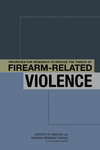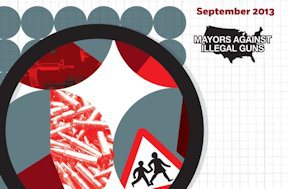One of the ways that the gun industry tries to maintain momentum is to promote the idea that if everyone would go around with a gun, we would all be a lot safer. Or to put it in the words of the chief gun guy in America, aka Wayne LaPierre, “a good guy with a gun will always stop a bad guy with a gun.” The only problem is that although concealed-carry permits are now available in all 50 states, there isn’t a single state that actually requires any special training before all those good guys put a gun on their hip and go out to find and stop the bad guys.
Which is one reason among others for gun-free zones. Because the real problem is that a lot of those good guys walking around with guns may not be able to do such a good job stopping the bad guys if they’ve had a couple of drinks, or maybe just lose control because it was a bad day at the office or the traffic on the way home just got to be too much. Don’t get me wrong; I’m not accusing gun owners of behaving any differently from anyone else. That’s exactly the point. If they behave like everyone else, a certain percentage are going to do something stupid or careless which could result in a good guy doing something very bad.
The truth is that the NRA is opposed to gun-free zones because they know that the more places where you can’t go with a gun, the more people will leave the gun at home. And the more they leave the gun at home, the less likely that they’ll buy more guns. The main reason that people have stopped smoking is not because of fears for their health, but because it’s just getting too difficult to find anywhere to light up. And the last thing the gun industry needs is for guns to be considered as much of a threat to our health as cigarettes.
In light of all this, it’s interesting that Seattle is making a big push in the business community to enroll business-owners to designate their shops, theaters and restaurants as gun-free zones. Yesterday the organization spearheading the drive announced their 100th business, a movie theater, that has agreed to post a sign asking patrons not to enter the theater with a gun. Of course the NRA and other gun activists immediately denounced the plan, claiming that they “knew” that gun-free zones resulted in more, not less gun violence. And what is their proof? An article on a Fox News blog by none other than John Lott, the gun researcher best known for inventing evidence about the alleged use of guns by armed citizens to prevent crime.
Lott claimed that the Aurora shooter, James Holmes, chose the Cinemark theater because it was the one theater near his residence that banned guns. Did Lott interview Holmes to learn this so-called evidence? Did anyone actually hear Holmes say that this was the reason? In all of the investigations that have taken place since the shooting has a single investigator stated that the theater’s no-gun policy is what motivated Holmes to walk into the Cinemark and start blasting away? And the answer is: no.
I really hope that authorities in Seattle will create a truly gun-free zone and then, at a later date, give us some hard data on the incidence of crime in that area before and after the gun-free zone came into effect. I don’t know whether crime will go up or down. But I do know this: every time the NRA parades someone like Lott out to support the use of guns by inventing evidence, an opportunity has been created to figure out whether we truly need to walk around with guns. Maybe we do and maybe we don’t. But Seattle may be giving us a real chance to find out.




Recent Comments